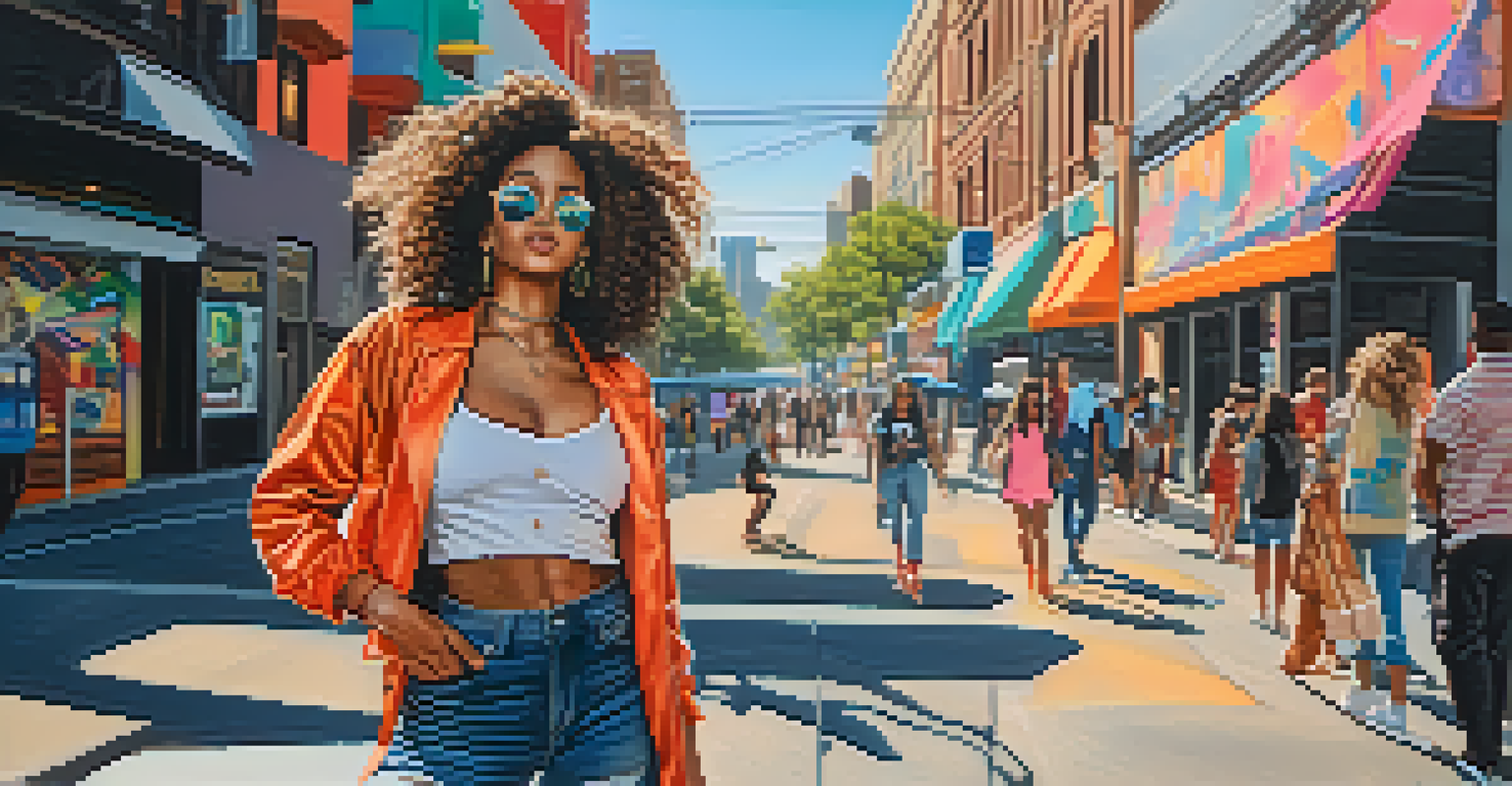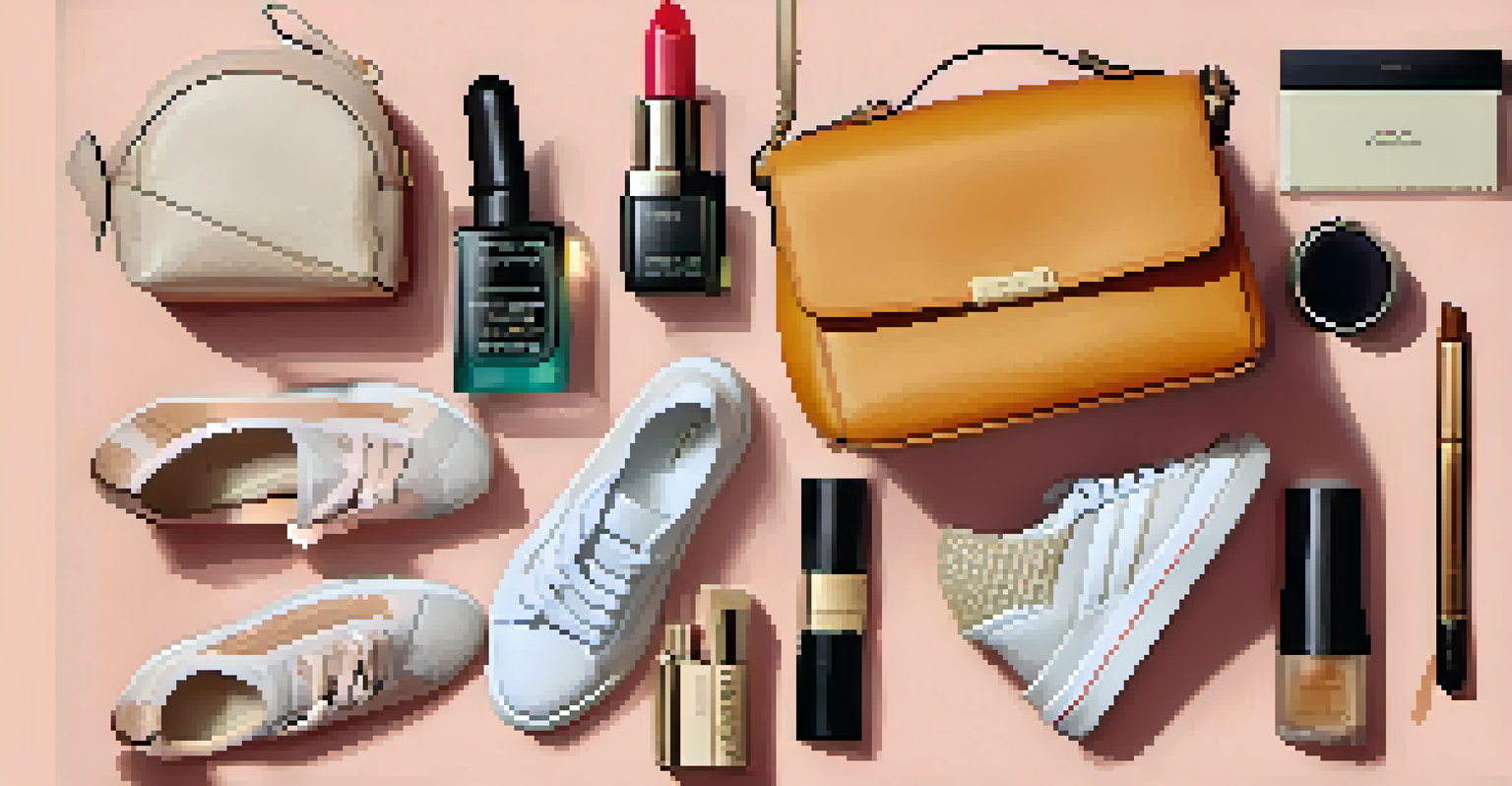Fashion Bloggers vs. Influencers: Who Drives More Sales?

Understanding Fashion Bloggers and Influencers
Fashion bloggers and influencers are often seen as two sides of the same coin, yet they operate in distinct realms. Bloggers typically create in-depth content on platforms like WordPress or Medium, focusing on style, trends, and personal narratives. In contrast, influencers often use social media platforms like Instagram and TikTok to share quick, engaging content, prioritizing visuals over text. This difference in approach can shape how they connect with their audiences and promote products.
Authenticity is the new currency of influence.
While both aim to inspire fashion choices, their methods and audience interactions can vary significantly. Bloggers may rely on storytelling and detailed reviews, which can foster a deeper relationship with their readers. On the other hand, influencers often create a sense of urgency and immediacy through their posts, leveraging their large followings to drive quick sales.
Ultimately, the choice between a fashion blogger and an influencer can depend on the marketing goals of a brand. Brands seeking a more personal touch may gravitate towards bloggers, while those wanting to capitalize on fast-paced trends might choose influencers.
The Role of Authenticity in Sales
Authenticity is a key factor when it comes to driving sales through either fashion bloggers or influencers. Audiences today are savvy; they can easily spot when a recommendation feels forced or insincere. Bloggers who share their genuine experiences with products often earn trust, which can lead to higher conversion rates. This authenticity is crucial in establishing a loyal reader base that values their opinion.

Influencers, on the other hand, can also create authentic connections but often face a different challenge. With the rise of sponsored content, audiences may question the motivations behind an influencer's endorsement. However, those who maintain transparency about collaborations tend to fare better, as audience trust can directly impact sales outcomes.
Bloggers Offer In-Depth Insights
Fashion bloggers create detailed content that fosters deeper connections with their audience, making them ideal for brands seeking trust.
In both cases, the power of authenticity cannot be overstated. Brands that align themselves with individuals who resonate genuinely with their audience are likely to see more effective sales results.
Engagement Levels: Bloggers vs. Influencers
Engagement is a critical metric for measuring the effectiveness of both fashion bloggers and influencers. Bloggers often have a dedicated readership, leading to higher engagement rates through comments and shares on their posts. Readers who visit a blog typically do so out of interest in the content, which can create a more engaged community. This engagement often translates into better sales figures as followers are more likely to trust and act upon recommendations.
In the world of fashion, storytelling is just as important as the clothes themselves.
Conversely, influencers can achieve rapid engagement through likes, shares, and comments but may face a more transient audience. Social media platforms are designed for quick consumption, which can lead to fleeting interactions. Despite this, influencers can leverage their reach to create viral trends that generate immediate sales, giving them an edge in certain situations.
Both bloggers and influencers have unique strengths when it comes to engagement, and understanding these can help brands tailor their marketing strategies effectively.
Target Audience: Who Are They Reaching?
The target audience for fashion bloggers and influencers can differ in significant ways. Bloggers tend to attract a niche audience that values in-depth fashion insights, personal stories, and detailed reviews. This audience is often more engaged and invested in the content, which can lead to a higher likelihood of making a purchase based on recommendations.
Influencers, on the other hand, often appeal to a broader demographic, utilizing their reach to attract a diverse audience. Many influencers are adept at tapping into various trends, which allows them to connect with different segments of the market. This broad appeal can drive immediate sales but may not foster the same level of loyalty as a dedicated blog audience.
Influencers Drive Quick Engagement
Influencers leverage social media to generate rapid engagement and immediate sales, appealing to a broader audience with fast-paced trends.
Understanding the demographics and preferences of each audience can help brands choose the right partner for their sales goals.
The Impact of SEO on Fashion Blogging
Search Engine Optimization (SEO) plays a vital role in the success of fashion bloggers. By optimizing their content with relevant keywords and phrases, bloggers can attract organic traffic from search engines, which can significantly boost visibility. For example, a well-optimized blog post about 'sustainable fashion' can draw in readers actively searching for that topic, leading to increased sales opportunities.
In contrast, influencers primarily rely on social media algorithms to reach their audience. While they might use some targeted hashtags to improve visibility, they don't have the same level of control over discoverability as bloggers do. This can limit their reach to followers who are already engaged, rather than attracting new potential customers through search.
Ultimately, effective SEO strategies can enhance the sales-driving potential of fashion bloggers, making them a valuable asset for brands looking to improve online visibility.
Measuring Sales Impact: Which is More Effective?
When it comes to measuring sales impact, both fashion bloggers and influencers can offer valuable insights, but their effectiveness can vary. For bloggers, sales can often be tracked through affiliate links or discount codes tied to their content, providing clear metrics on conversion rates. This makes it easier for brands to assess the direct impact of a blog post on sales.
Influencers also use unique discount codes and affiliate links, but their sales impact can be more challenging to quantify. Their reach and engagement can lead to sudden spikes in sales, but tracking the exact source of conversion can be less straightforward. Additionally, the transient nature of social media interactions can complicate the measurement process.
Authenticity Boosts Sales Success
Both bloggers and influencers need to maintain authenticity to build trust with their audiences, which is crucial for driving sales.
Ultimately, while both can drive sales, the methods used to measure that impact differ significantly and can influence a brand's decision on whom to partner with.
Choosing the Right Partner for Your Brand
Selecting the right partner between a fashion blogger and an influencer depends on your brand's objectives and target audience. If your goal is to build long-term relationships with customers and foster trust, a fashion blogger might be the better choice. Their in-depth content can create a more meaningful connection with readers, leading to sustained engagement and loyalty.
Conversely, if your aim is to create buzz around a new product or trend, an influencer might be the ideal partner. Their ability to reach a wider audience quickly can generate immediate sales and elevate brand visibility. This approach works well for brands looking to capitalize on fast-moving trends.

Ultimately, the choice should align with your brand's marketing strategy, audience preferences, and sales goals to achieve the best results.
The Future of Fashion Marketing
As the digital landscape evolves, so too will the roles of fashion bloggers and influencers in marketing. With the rise of new platforms and technologies, we may see shifts in how these two groups engage with their audiences. For instance, the emergence of video content continues to grow in popularity, potentially reshaping how both bloggers and influencers create and share their work.
Additionally, as consumer preferences shift towards authenticity and transparency, both bloggers and influencers will need to adapt their strategies. Brands that prioritize genuine partnerships with individuals who align with their values are likely to see the most success in this new environment.
In conclusion, the future of fashion marketing will likely blend the strengths of both fashion bloggers and influencers, creating new opportunities for brands to connect with their audiences and drive sales.